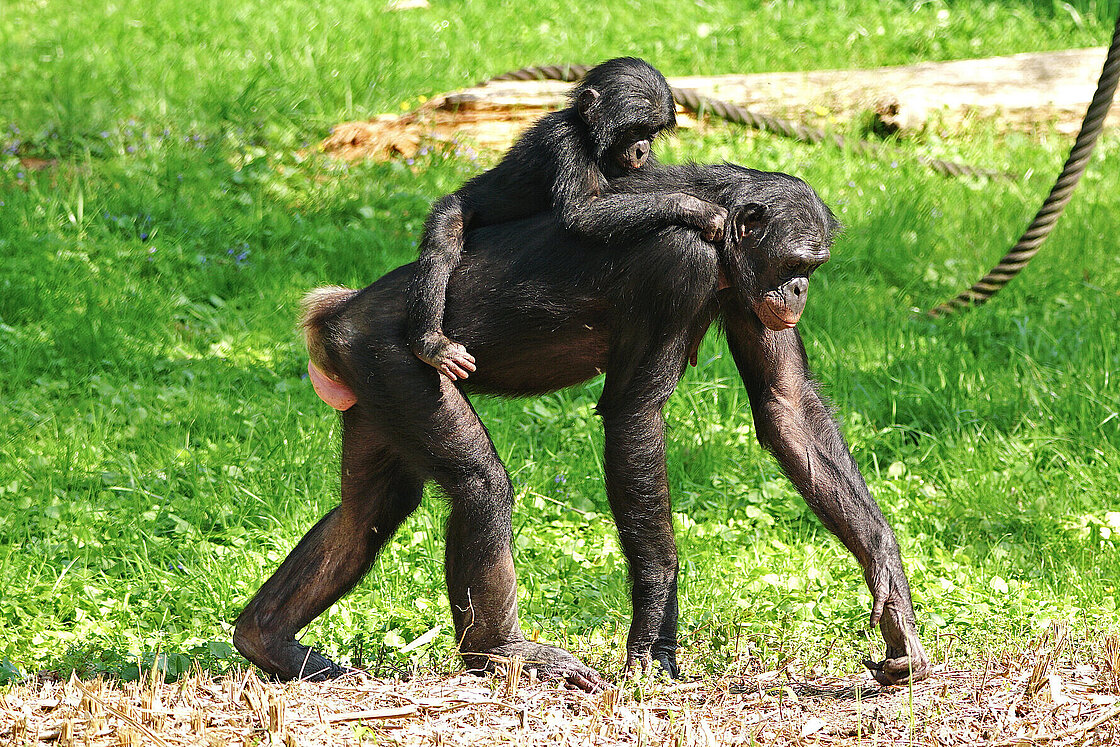

Blood group studies show many differences between bonobos and common chimpanzees, enough that some researchers have suggested they should be in a separate genus.Common chimps are either group A or O, and the A antigen of their red cells differs from those in human red cells.Pygmy chimpanzees show few individual differences in their blood groups (unlike P.The only other animals with some form of VEN cells are whales, dolphins, and elephants, all animals with large brains and highly evolved social awareness, including empathy.Neither gorillas nor chimpanzees have a VEN brain cell organized in clusters like those of humans and bonobos.VENs help regulate complex social interactions requiring knowledge of other individuals' mental state.Bonobos share with humans a similar pattern of distribution of brain neuron cells called VENS (also called spindle cells or Von Economo Neurons).Of all the great apes, bonobos are the most human-like in their leg length.Bonobos are quite similar in overall body size, cranial capacity, and lower limb length to an ancestral hominid, nicknamed Lucy, who lived some 3 million years ago in Africa.More body weight (heavier muscles) in lower legs of bonobos.


Baldness does occur, although "perhaps later in life" than in other chimpanzees.Hair on top of head appears to be parted down the middle.Many adults retain the white rump tuft common to infants. L., 1979, Pygmy chimpanzee morphology and the interpretation of early hominids, S.Black face, ears, palms and soles of feet individuals in managed care may have lighter pigmentation.Scientists believe the decline will continue for the next 45 to 55 years due to the bonobo’s low reproductive rate and growing threats. Though the size of the bonobo population is largely unknown, it has likely been declining for the last 30 years. Efforts to survey the species over the past two decades have been hampered by the remote nature of its habitat, the patchiness of its distribution, and years of civil unrest within the DRC.Ĭivil unrest and communities facing economic barriers in the area around the bonobos’ forests have contributed to bonobo poaching and deforestation. As the last great ape to be scientifically described, much remains unknown about the bonobo-including the extent of its geographic range. They weren’t recognized as a separate species until 1929. Wild bonobos can only be found in forests south of the Congo River in the Democratic Republic of Congo (DRC). However, bonobo life isn’t entirely violence-free if two groups of bonobos come together, they may engage in serious fighting. It is important to understand that bonobos ( Pan paniscus) are not chimpanzees ( Pan troglodytes ). The name pygmy chimp was bestowed by Westerners in the 1930's, not because the animals were diminutive in size, but because they lived near human pygmies. They also maintain relationships and settle conflicts through sex. Bonobos are also called pygmy chimpanzees. Their society is also different-bonobo groups tend to be more peaceful and are led by females. Bonobos are usually a bit smaller, leaner, and darker than chimpanzees. Bonobos and chimpanzees look very similar and both share 98.7% of their DNA with humans-making the two species our closest living relatives.


 0 kommentar(er)
0 kommentar(er)
